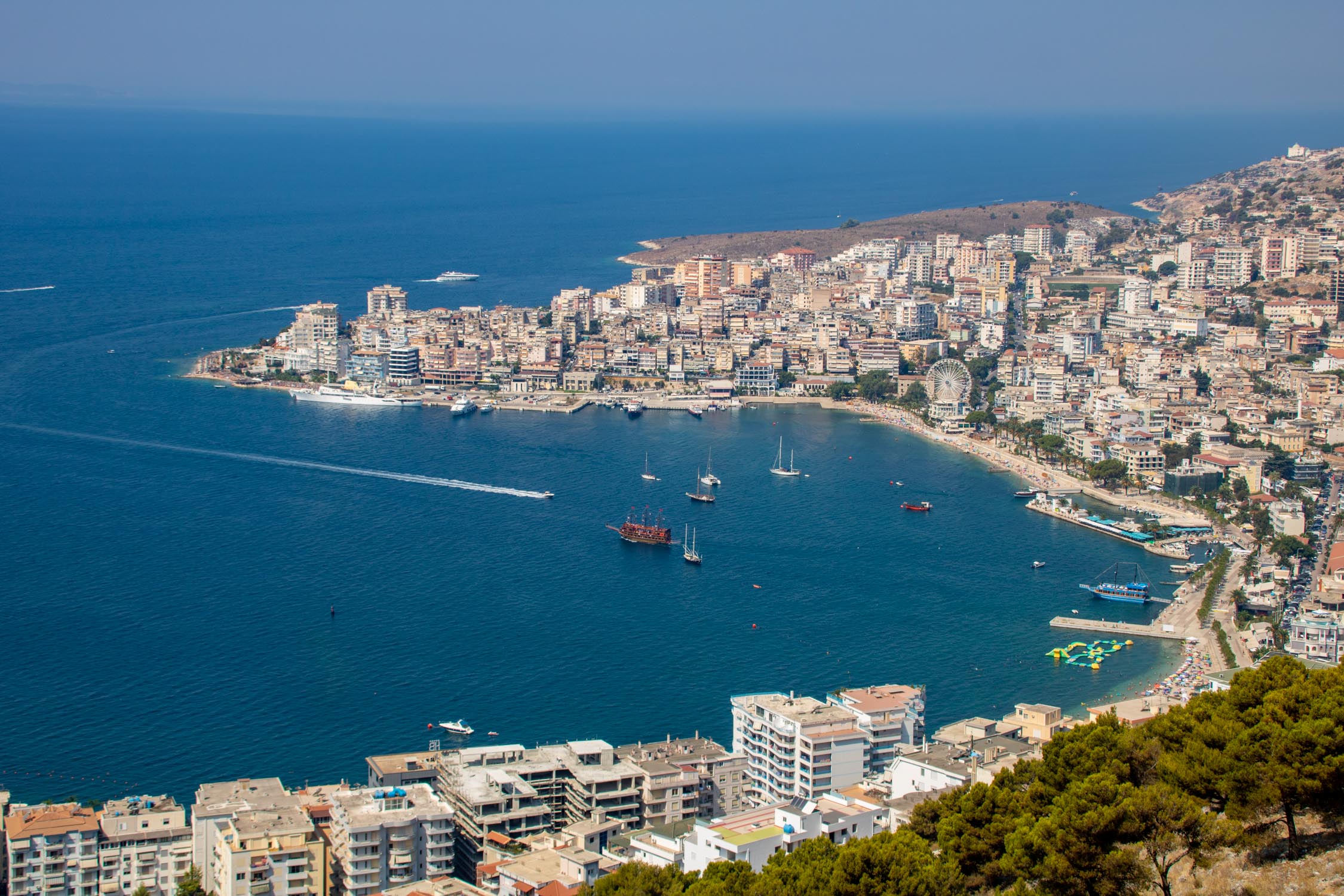Saranda

Saranda is a resort on the Albanian Riviera, in southern Albania. Sandwiched between the Ionian Sea and hills of olive groves, the town is on a horseshoe-shaped bay, edged by beaches and a promenade. In the center are the archaeological remains of a 5th-century synagogue, later an early Christian basilica. Intricate floor mosaics are still evident. The 16th-century Lëkurësi Castle is on a hilltop above the town.
Butrint
Butrint was an ancient Greek and later Roman city and bishopric in Epirus. Perhaps inhabited since prehistoric times, Buthrotum was a city of the Epirote tribe of the Chaonians, later a Roman colony and a bishopric. It entered into decline in Late Antiquity, before being abandoned during the Middle Ages after a major earthquake flooded most of the city. In modern times it is an archeological site in Vlorë County, Albania, some 14 kilometres south of Sarandë and close to the Greek border. It is located on a hill overlooking the Vivari Channel and is part of the Butrint National Park. Today Bouthrotum is a Latin Catholic titular see and also features the Ali Pasha Castle.
The city is considered one of the most important archaeological sites in Albania. On the strength of the immense wealth of cultural, historical and natural value with a considerable history, Butrint was declared a UNESCO World Heritage Site in 1992 and further a National Park in 2000.
Blue eye
The Blue Eye (Syri i Kaltër in Albanian) is a water spring and initial water source of the Bistricë, a 25 km long river which ends in the Ionian Seat just south of Saranda. The source is a natural phenomenon with a depth of at least 50 meters, the deepest any diver has been able to go, so the actual depth is even unknown.